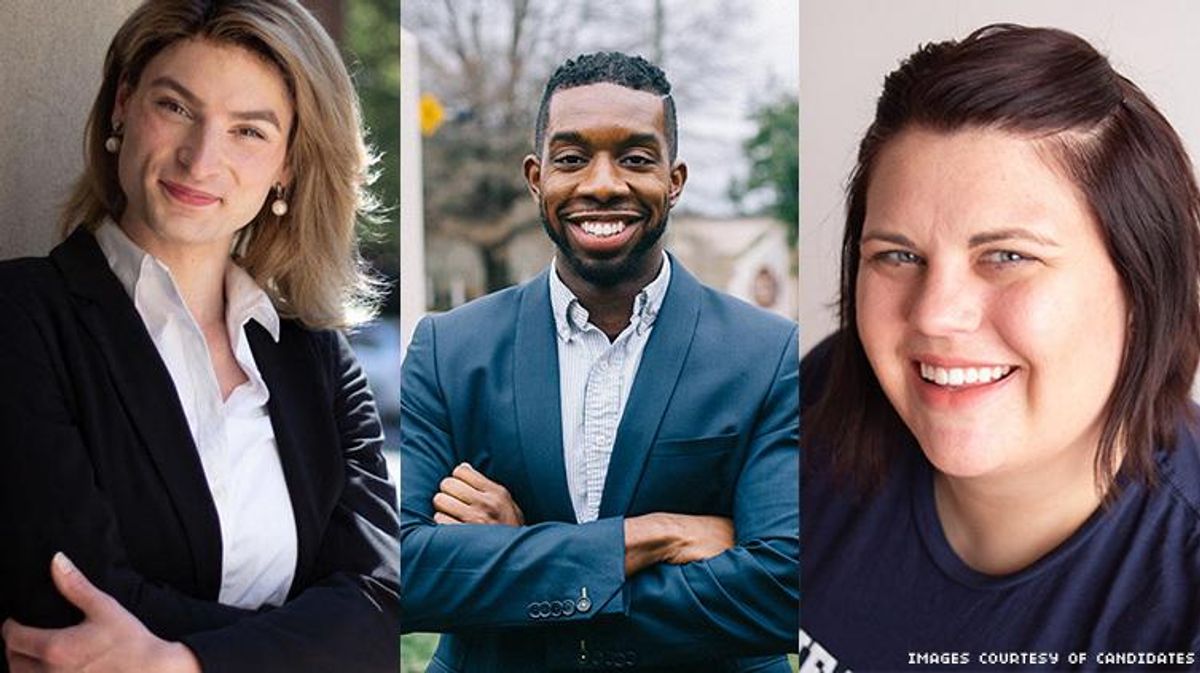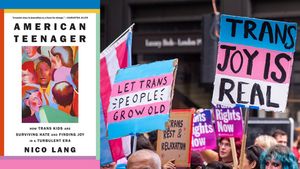LGBTQ+ elected officials contributing to the rise in numbers include (from left) Wheeling, W.Va., City Council member Rosemary Ketchum; Gwinnett County, Ga., Board of Education member Everton Blair Jr.; and Indianapolis City Council member Ali Brown.
The past 12 months saw LGBTQ+ representation in elective office in the U.S. grow by 21 percent, with 843 known out officials as of June, according to a new report from the LGBTQ Victory Institute.
The increase is attributable to several favors, as documented by Victory Institute's Out for America report. More LGBTQ+ candidates are running for office, more are willing to be out while running, and more are coming out while in office as well.
The number of out officials is likely to grow even more over the next 12 months, as more than 880 openly LGBTQ+ people are running for office in 2020 -- the most ever. But there is a long way to go to achieve representation that reflects their proportion of the U.S. population.
"While the growth in LGBTQ elected officials was strong, LGBTQ people still hold just 0.17 percent of elected positions in the United States despite making up 4.5 percent of the U.S. adult population," reads a Victory Institute press release. "Americans must elect 22,544 more LGBTQ people to public office to achieve equitable representation in government."
There is increasing diversity in the makeup of LGBTQ+ elected officials, the report notes. Bisexual representation increased by 53 percent and the number of queer-identified elected officials increased by 71 percent; the number of trans women in office grew by 40 percent, although there was no increase in representation for trans men; and the increase in LGBTQ+ elected officials of color came at a rate similar to LGBTQ+ elected officials overall. Still, LGBTQ+ people in elective office are overwhelmingly white (77 percent), cisgender men (57 percent), and gay-identified (54 percent).
The number of out mayors increased by 35 percent over the period, while there was a 9 percent increase in out state legislators over the past year -- from 147 to 160 -- even though just four states held elections for their full state legislatures in 2019.
The report also looks at trends since comprehensive data was first collected by Victory Institute after the November 2017 election. Between November 2017 and June 2020, there was an 88 percent increase in known openly LGBTQ+ elected officials. During that period, the number of out officials who are people of color doubled (from 92 to 184), including a 126 percent increase in those who are Black (from 23 to 52). Latinx representation grew at a slower rate, as did Asian/Pacific Islander representation. Transgender representation quadrupled, and bisexual representation increased five-fold.
"While the number of LGBTQ elected officials continues to increase at a steady pace, we still must elect 22,544 more LGBTQ people to public office before equitable representation is achieved," Annise Parker, president and CEO of Victory Institute and its sibling organization, the LGBTQ Victory Fund, said in the press release. "The hateful legislation targeting our community in city councils, state legislatures, and at the federal level is a by-product of this gap in representation. Allied elected officials are critically important. But when LGBTQ elected officials are in the halls of power, they change the hearts and minds of their lawmaker colleagues, defeat anti-LGBTQ bills, and inspire more inclusive legislation. The numbers in this report show LGBTQ political power is growing rapidly. But it also demonstrates the daunting representation gap that we must close and is a call to action for all in our community to consider a run for office."
Victory Fund and Victory Institute both work to increase the number of out LGBTQ+ people in office -- the former through endorsements and campaign support, the latter through training candidates and campaign workers.
Read the full Out for America report here.

















































































Viral post saying Republicans 'have two daddies now' has MAGA hot and bothered